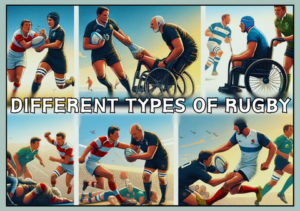Have you ever wondered what it takes to become a wheelchair rugby player? The wheelchair rugby rules might look daunting at first, although they are similar to the simple rugby rules. But if you’re willing to put in the time and effort, wheelchair rugby can be an incredibly rewarding sport.
Where wheelchair rugby is played?
Indoors, the game is played on a specially-designed court.
How does wheelchair rugby work?
The game is played by two teams consisting of 12 players each. They compete to control the ball and move it around the court. Points are scored when the ball is thrown through the hoops located at either end of the court.
Who is wheelchair rugby for?
Wheelchair rugby is for athletes who have physical disabilities. It uses a system of classification to determine which competitors can safely compete with each other.
What are the four basic rules of wheelchair rugby?
First, players must always remain in their wheelchairs during the game. Second, there is no physical contact allowed between players above or below their mid-thigh. Third, it is illegal for players to hold the ball in their hands longer than 10 seconds when they are moving. Last, it is illegal for a wheelchair to be intentionally moved by a player with their hands or arms.
Which wheelchairs are suitable for wheelchair rugby?
A wheelchair must have a few key features to be suitable for wheelchair rugby. These features include a cushioned frame, adjustable straps, and a protective framework. It should be easy to move.
Whether you’re a beginner or an experienced athlete, this article will give you everything you need to know about wheelchair rugby rules and equipment. We’ll discuss the basics such as court/field dimensions, types of wheelchairs allowed, and on how to play wheelchair rugby. We’ll also go over some of the more advanced rules and strategies for scoring goals.
So grab a snack and have a seat: it’s time to dive into the fascinating world of wheelchair rugby!
How Does Wheelchair Rugby Work
Wheelchair rugby is a unique and dynamic sport that combines the power and strategy of wheelchair basketball, rugby, and handball. It’s an exciting team sport for both male and female athletes with a physical disability in at least three limbs.
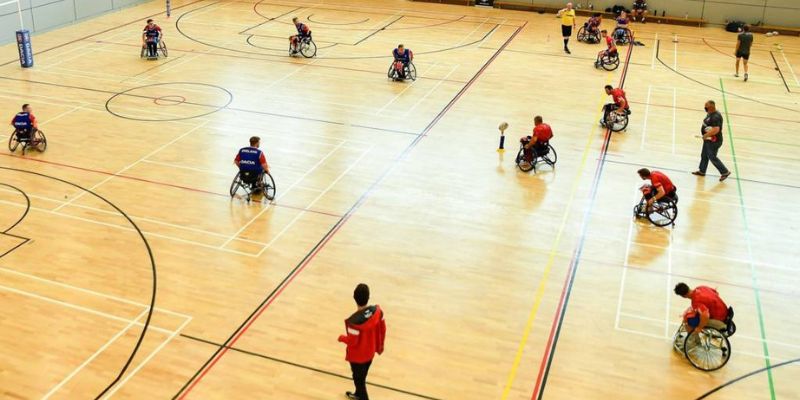
If you’re new to wheelchair rugby, the first thing you should know is the basics of this daptive wheelchair rugby classification system. Wheelchair rugby is a sport for athletes with physical disabilities, so it uses a classification system to determine who can compete safely with each other.
Wheelchair rugby teams are allowed four players on the court at a time, but all twelve may rotate in during the course of a game. Each team must field one player with a disability classified as 0.5 (the least amount) up to 3.5 (the most severe). A player with a 1.0 disability classification must be on the court at all times.
Players use their wheelchairs to block opponents’ wheelchairs while they manoeuvre with their hands to pass or carry the ball, hence why it’s also known as “murderball”! The game is fast-paced, intense, and most importantly, fun!
Each player has a specially designed wheelchair designed for the sport. These wheelchairs are fitted with metal bars that can be used in the game to bump and block opponents’ wheelchairs, while the ball can be passed between players or into the goal area. The wheelchair itself cannot be used to touch or move the ball in any way, only to obstruct opposing players’ wheelchairs.
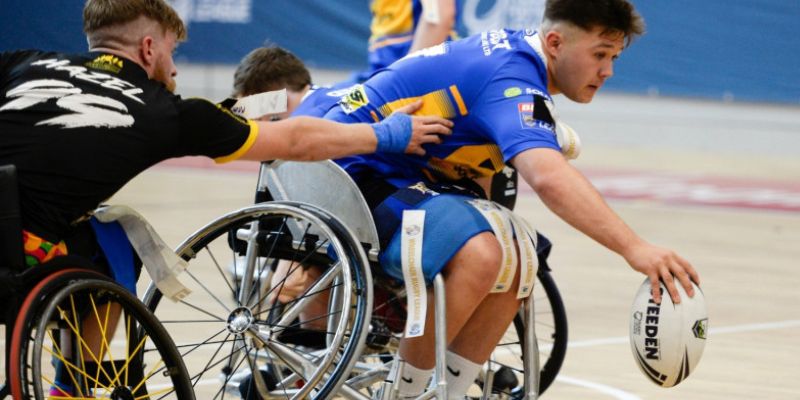
Where is Wheelchair Rugby Played and What is The Main Objective of Rugby
The game is played indoors on a specially designed-court. Two teams of up to twelve players compete against each other to take control of the ball, manoeuvre it down the court, and score points by throwing it through two hoops at each end of the court.
The aim of each team is to move the ball across their opponent’s goal line and score as many times as possible in two halves of 15 minutes each. If a player touches the court surface with any part of their wheelchair except their wheels they are considered out-of-bounds and give possession away to the other team.
During play, teams are only allowed five seconds in possession of the ball before it must be passed or shot at goal.
Wheelchair Rugby Rules and Regulations
Ready to dive into wheelchair rugby? You’ll need to learn the rules and regulations of the sport first.

The rules of wheelchair rugby revolve around a few main points. First, the players must remain seated in their wheelchairs at all times during play. Secondly, physical contact between players is limited and not allowed above the shoulders or below the mid-thigh.
Third, it’s illegal for a player to have possession of the ball for more than 10 seconds while their wheelchair is in motion. Lastly, any intentional movement of a player’s wheelchair with their hand(s) or arm(s) is prohibited.
In addition to these rules, there are also safety regulations that must be followed by all players. All players must wear a helmet with a faceguard attached at all times during matches and practice sessions. All wheelchairs must be outfitted with metal side guards that offer protection from accidental collisions and assists in keeping players upright during gameplay.
As you become more familiar with wheelchair rugby and these rules, you’ll be able to play safely and enjoyably!
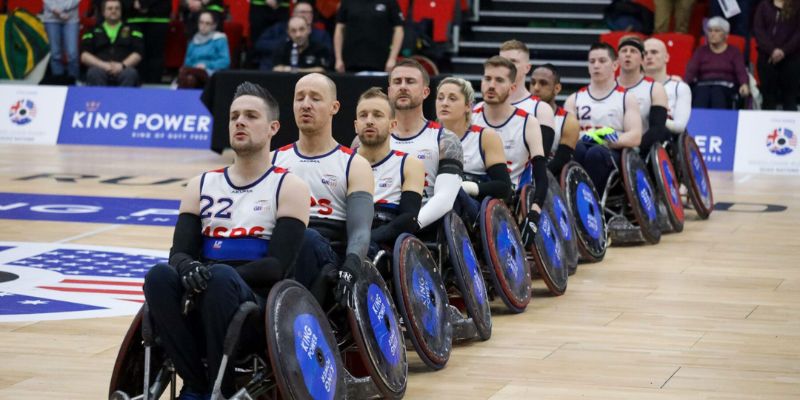
Rules must be followed
Wheelchair rugby also has several rules that must be followed by all players and referees. These wheelchair rugby rules include:
1. No contact between chairs
2. No intentional fouling.
3. Appropriate use of hands and feet on the ball
4. Use of only one hand while carrying or dribbling the ball
5. No kicking or striking of opponents’ chairs, etc.
Breaking these rules will result in either a free throw or an ejection from the game.
Wheelchair Rugby Equipment
Another important thing to familiarize yourself with when playing wheelchair rugby is the rugby wheelchair equipment.
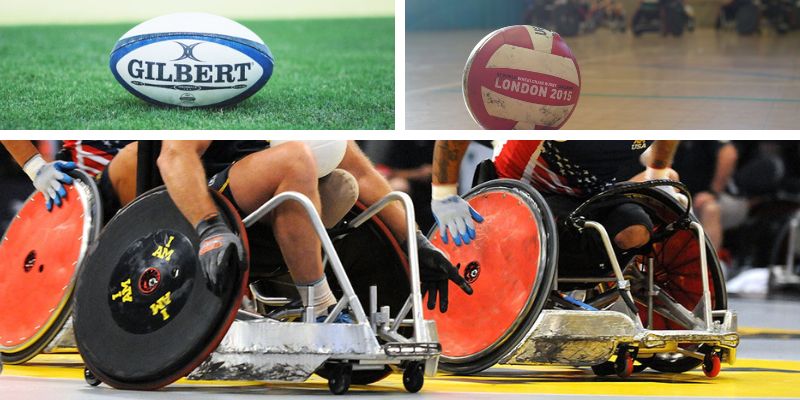
Wheelchair
The wheelchair rugby chair used for rugby must be a rigid wheelchair designed specifically for this sport, as it must be strong enough for contact with other players. There are a few features that make a wheelchair suitable for wheelchair rugby. Such features include a protective frame, cushioning, and adjustable straps.
The chair should also be easy to maneuver, so it’s important to take the time to find one that fits the player’s body and needs.
Ball
The ball used in wheelchair rugby is very similar to a volleyball. But it is slightly larger at just over one kilogram in weight and about seven centimeters in diameter. It has two layers of fabric which are stitched together and contain a bladder filled with air. The ball should not be too hard or too soft. So it’s important that it is inflated properly prior to the game.
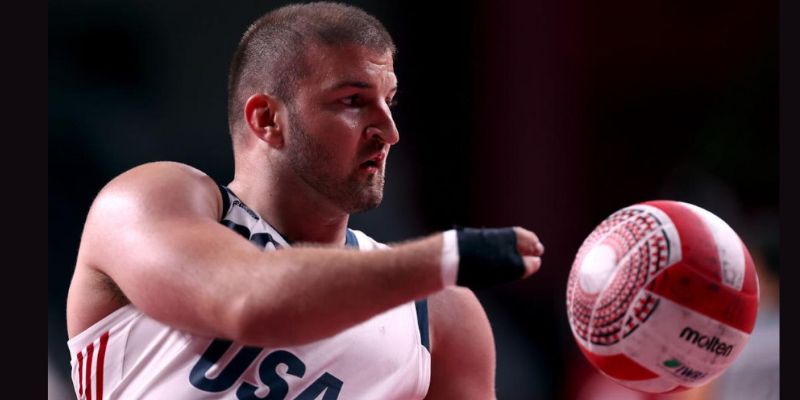
Conclusion
Wheelchair rugby is an exciting and fun team sport with its own unique set of rules and regulations. It’s a great way for wheelchair users to get involved in team sports. It’s also great for anybody looking for a fast-paced game that combines skill and strategy.
The right kind of wheelchair, plus the right equipment and wheelchair rugby rules, make this a great activity. It’s an inclusive, team-based sport that is full of excitement and fun. This guide will give you the information you need to get started. It will help if you are looking to get into a new sport or want to support a friend.





